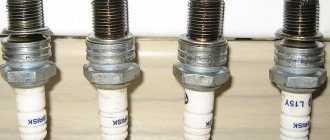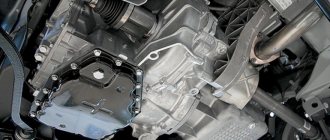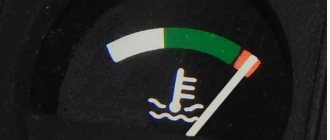Manual transmission - reliability, efficiency, simplicity of design. You can supplement the list of positive aspects of mechanics with maintainability and low cost compared to other gearboxes. But if the gearbox howls, then all the advantages begin to fade unpleasantly.
Gearbox whine is unpleasant, but often encountered in manual transmissions. In general, if something howls in a car while driving, then this is an unpleasant thing, and even more unpleasant when there is an understanding that one of the main components of the car is faulty. This problem applies not only to domestic cars, but also to foreign cars.
If you are interested in renting special equipment, Dekar Stroy will help you with this.
Why does a manual transmission howl?
Many manual transmissions, even in good condition, are not very quiet. Even on a new car, the transmission can make sounds while driving, this is especially true for vehicles in the budget segment. For example, the whine of a VAZ gearbox is the norm for many cars. Every owner knows what the normal noise level is inside his car, and will always notice changes. If the noise of the box changes in tone, competes in volume with the sound of the engine, or appears in some specific conditions, you need to think about a visit to a car service center.
Many people confuse noise in the box with malfunctions of other elements. Often, while driving, a worn-out release bearing howls. The volume and tone of the noise directly depends on the speed of movement, so the diagnosis of “box whine” is mistakenly made. A clutch that requires replacement can also cause a similar problem. Without diagnostics, it is difficult to figure out what causes the unpleasant sound, so it is better to contact a car repair shop.
If the manual transmission itself makes a hum, there may be several reasons:
- If there is insufficient lubrication, a hum may occur due to intense friction of parts. The howl is heard especially clearly in higher gears.
- Noise may occur after improper repair of the gearbox. Assembly requires precision. If the shafts and gears are misaligned relative to each other, the box will make noise.
- A common cause of noise is failure of synchronizers. This malfunction is usually accompanied by a grinding noise when engaging certain gears.
- If the noise is present when the gear selector is in neutral, there is likely a problem with the input shaft bearing.
- The pinion bearing may also make a noise.
- Wear of the main pair is another source of box howling. If measures are not taken in time, other parts will also fail.
- If the whine is only heard in a certain gear, the cause lies in the gears. If their teeth are damaged, the box will hum.
- If the box hums when cold, especially in the winter, the culprit may be that the oil is too thick. After warming up, the transmission is much quieter.
- Old oil in a box may contain metal shavings and other impurities. This may be the cause of the noise.
If a howl appears in the box, pay attention when it occurs, whether its pitch and volume changes in different modes. If noise appears when the clutch is depressed, there is a crunching sound when engaging 1st or 2nd gears, there is a high probability of wear of the release bearing. Extraneous sounds when engaging certain gears indicate problems with gears or synchronizers. A humming noise in higher gears or in cold gears may indicate an insufficient level or low quality of transmission oil.
Diagnostics and repair
As for transmission repair, it is very important to first carry out a correct diagnosis of a possible malfunction of the unit, try to determine why the gearbox makes a howling noise without removing the unit. Usually the box does not howl in all modes, but at some speeds
If a howl accompanies movement in 1st, 2nd, 3rd gears, then this usually indicates problems with the bearing connecting the primary and secondary shafts, or more precisely, its wear. The only solution is to replace it. But there is a small nuance - if the bearing is a needle bearing without a cage, then simply replacing the needles may not help. This will require replacement of the shafts. And this is already a serious repair.
It is also possible that there may be a howling noise when the working pair of gears located on the primary and secondary shafts of these gears wear out. Or due to poor quality factory processing and installation after repair. One of the characteristic features of gear wear is howling under load and its reduction in the absence of traction. A worn bearing will make noise regardless of whether there is a load or not. But you can determine the exact reasons only by disassembling the gearbox and showing it to a specialist if the repair is done by yourself.
If there is a whine in 5th gear, the first thing that needs to be done is to check and add oil to the unit if necessary, as discussed earlier. But if this does not help, then most likely the fifth gear gear needs to be replaced. This is determined by opening the box. Preliminarily, by the sound at high speed, you can determine the cause - if there is an outright whine, the gear is worn out; if there is a squeaking sound over 100 km/h, it is most likely the bearing.
If the gearbox of front-wheel drive cars howls in all gears, then there is a high probability of wear on the input shaft bearing. But replacing it often does not lead to a positive result, so changing it in the presence of minor howling is not recommended.
Or maybe it's not a box at all?
When diagnosing a gearbox, be sure to carefully consider the fact that if there is a constantly increasing howl in all gears, it may not be only the gearbox that is to blame for the origin of the sounds. On models with a classic drive, the source of the howl may be the rear axle gearbox, which has a bevel hypoid gear. If the gear teeth are worn out or there is significant play in the bearings, a howl will accompany all driving modes. Similar symptoms also accompany an all-wheel drive vehicle when the front axle malfunctions. The sound will come from the center of the cabin and be observed under load.
The howl of an automatic transmission, robot or variator
Automatic transmissions are normally quieter than manual transmissions. If the howl of a manual Niva or Lada Kalina transmission may be a normal condition of the transmission, then third-party sounds from the automatic transmission should alert the car owner. Diagnosing the causes of third-party sounds when operating automatic transmissions is quite difficult. Sometimes computer diagnostics can help identify the problem, but in most cases you have to remove and disassemble the transmission. Having learned the cost of this procedure, many continue to drive a car and drown out the howling with loud music. But this is wrong; with significant wear of all internal components, repairs will cost more than with minor problems. In addition, a faulty transmission can fail at any time.
The main reasons for howling automatic transmission:
- If there is little transmission fluid in the box, usually not only extraneous sounds appear, but also kicks when changing gears.
- If the automatic transmission starts to howl after repair, it may have been assembled incorrectly. Even a slight displacement of parts leads to the appearance of third-party sounds.
- If the axle shafts are poorly secured, play occurs, which leads to noise.
- The quality of the transmission fluid also affects the operation of the automatic transmission. If the oil is old, contains mechanical impurities, or a fluid that does not meet the manufacturer’s requirements is filled in, the box will begin to hum.
- Worn or damaged gears, bearings and other mechanical parts lead to the appearance of extraneous sounds.
An automatic transmission is a rather complex mechanism compared to a manual transmission, which is why it is more difficult to identify the cause of the howling. But even if you need to disassemble the transmission with troubleshooting, it is better to perform this procedure than to face a critical breakdown along the way.
Tribotechnical composition of the manual transmission - additional protection with every shift
In addition to high-quality gear oil, problems with manual transmissions can be avoided by using tribological compounds. At their core, they can be classified as additives, but with one very significant amendment. They do not change the physical and chemical properties of the oil, but only complement it. The first thing the tribological compound does is restore the geometry of the gear teeth. A larger amount of oil is retained on the surface of rubbing parts, and clearances are optimized.
What to do if the box howls
The first thing a car owner should think about when a howling noise appears in the transmission is a transmission fluid leak. Inspect the car's riser for oil stains, assess the oil level in the box using the dipstick, which most car models have. If the transmission fluid level is below the minimum mark, it must be topped up immediately. Use only the brand of oil that comes in the box. You cannot mix liquids from different manufacturers. You should know that automatic transmissions are very sensitive to the level of lubrication, so an overflow of transmission fluid is as unacceptable as a lack of it. If the oil has not been changed for a long time, it should be done. Automatic transmissions are especially sensitive to the quality of transmission fluid.
If it was not possible to eliminate the howling of the box by replacing or adding oil, you need to go to a service station for diagnostics. Specialists will assess the condition of the transmission and tell you how much repair is needed.
If you decide to sort through the box, you should take into account that the cost of such work is quite high. That is why it is advisable to purchase new original spare parts. Only in this case can you count on a long service life of the transmission after repair. Buying used spare parts or cheap parts from a dubious manufacturer is an imaginary savings. There is a high probability that soon after such repairs the gearbox will have to be disassembled again.
If the main pair is damaged, it is rarely possible to get by only by replacing it. Usually in such a situation other parts also suffer, so you need to evaluate their condition and, if necessary, also replace them.
Sometimes repairing a box turns out to be very difficult and expensive. In this case, it is advisable to replace the entire transmission. You can buy a new unit or find a used box in working condition.
Driven clutch disc.
Driven clutch disc.
Driven clutch disc.
The play between it and the disk itself was unacceptably large. The hub was gradually gnawing on the seat and indistinctly announced this with knocks. A little more - and the Pajero would have stood in the middle of the road.
In conclusion, let me remind you the following. On modern cars, manual clutch adjustment is not provided. If during acceleration the tachometer goes off scale and the car accelerates sluggishly, the clutch must be changed immediately. It’s different with a domestic product. It is not very convenient that here you have to more often monitor the free play of the pedal and manually adjust it. But if the first signs of slipping appear, but there is still something to regulate, then you can drive for a while.
This was easier on older cars with a hydraulic clutch: as its discs wore out, the free play of the pedal decreased, and the force on it increased. The basket disk pressed the driven disk against the flywheel weaker. But as long as it was possible to maintain the required clearance in the drive, the car drove. And on modern front-wheel drive VAZ cars, for example, the drive is cable-driven, without any backlash. The gradual rise of the pedal warns of clutch wear - it becomes higher than the brake pedal. To prevent slipping, you need to adjust the cable by lowering the clutch pedal to the level of the brake pedal.
It is worth remembering that the clutch of these cars “dies” very quickly in case of slipping! People often ask: why does a car, especially a hot one, shake when starting? A common cause is a misalignment of the pressure plate diaphragm spring. For this reason, it does not grab with the entire working surface, breaks down, grabs again - until the clutch is fully engaged, it shakes the entire car. Because of this, the spring petals may break. And with strong heating, the diaphragm spring often warps, changing shape. The result will be the same. Such defects cannot be treated; the clutch will have to be replaced.
Should I use additives?
There are special additives for gearboxes. Is it worth using them, will they solve the problem of transmission whining?
Additives are effective in preventing breakdowns. Many of them can significantly increase the service life of the transmission. If a minor malfunction occurs, using these products will help temporarily get rid of the noise and delay repair time. But you shouldn’t hope to restore the parts; sooner or later they will have to be replaced anyway.
If the box is severely worn, and even more so if it fails, additives are ineffective. In this case, you shouldn’t spend money on auto chemicals; it’s better to go straight to the service center.
Additives for automatic and manual transmissions differ in their properties. Use automotive chemicals designed for the type of transmission installed in your vehicle. Avoid using products from dubious manufacturers. At best, they will have no effect, and at worst, they will lead to more serious problems.
Transmission oil Suprotek Atomium - a universal soldier in manual transmission
As discussed above, half of the problems with gearbox noise and hum are associated with low-quality transmission oil or insufficient filling. For vehicles with a manual transmission, it is recommended to use Suprotek Atomium transmission oil on a fully synthetic basis. This allows you to achieve stable operating properties throughout the entire service life. The peculiarity of this transmission oil is that it practically does not break down when heated, does not oxidize, does not burn at all and does not evaporate. In addition, the mineral impurities included in the composition absolutely do not enter into chemical reactions with wear products, fuel or other additives.
Synthetic gear oil
Synthetic gear oil with viscosity class 75W-90. Buy oil for manual transmission gearbox with a manufacturer's warranty.
more reviews
The use of gear oil 75W-90 SUPROTEC ATOMIUM gives your gearbox the following properties:
- Protection against wear and corrosion;
- Increased resistance to oxidation;
- Stable lubricity even at high temperatures and intensive use;
- Required viscosity at low temperatures, allowing for smooth gear changes;
Synthetic oil is completely safe for oil seals, which also significantly increases their service life.
conclusions
The howling of a Renault, Lada Vesta, Grant or any other car is a problem that cannot be ignored. A working transmission does not make any strange sounds, so if they appear, go to a service center as soon as possible. The sooner the diagnosis is carried out, the cheaper the repair will cost. If you constantly postpone this event, then the howl may end in buying a new box.
The gearbox is a rather complex unit, especially when it comes to an automatic transmission. Do not trust repairs and diagnostics to random people. It is better to contact a specialized auto repair shop that has the necessary equipment and tools.
VAZ checkpoint, a frequent source of howling.
Worn synchronizers are a source of increased noise. For replacement.
A worn input shaft bearing is another enemy of silence.
A faulty release bearing is a frequent source of additional noise.
edit this post











